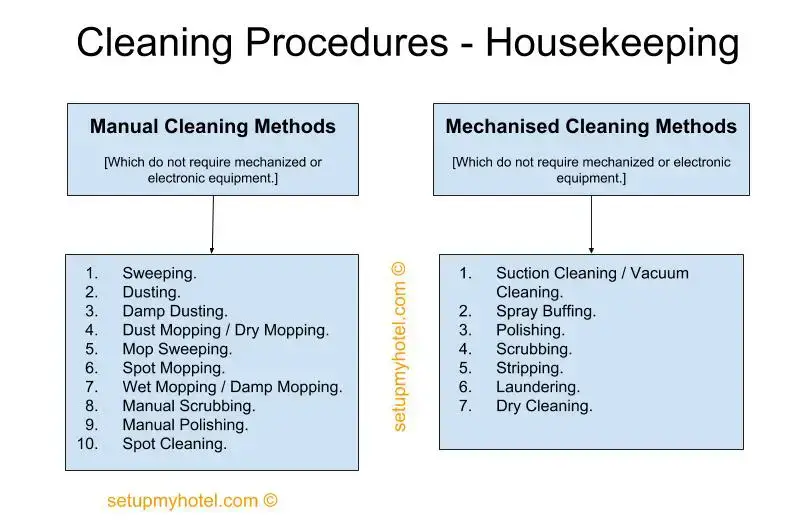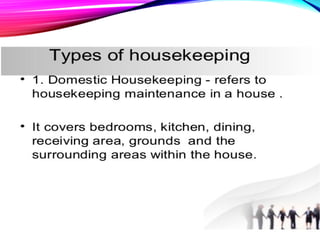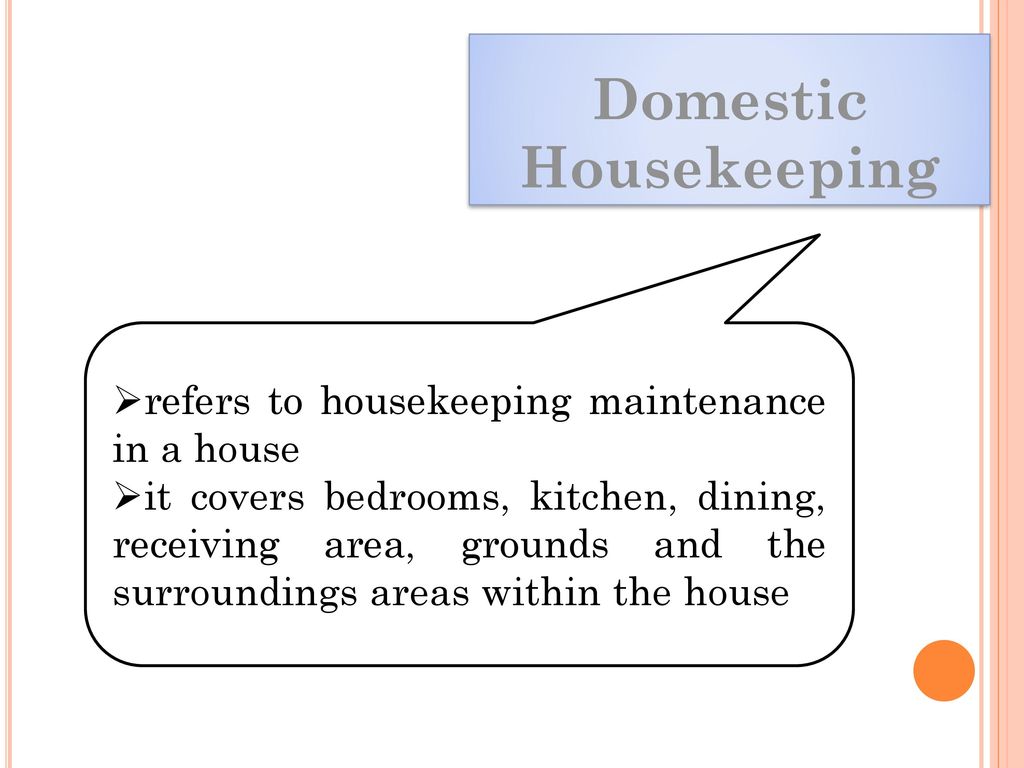Ah, housekeeping. The never-ending battle against the dust bunnies and the never-ending quest for a spotless home. But did you know that housekeeping can be split into two distinct types? Yes, folks, you heard it here first. There are not one, but TWO types of housekeeping. So buckle up, grab your feather dusters, and prepare to embark on a hilarious journey through the world of housekeeping, where we explore the differences between Type A and Type B, and maybe find a few laughs along the way.
Introduction
Welcome to our comprehensive guide on housekeeping! In this article, we will dive into the wonderful world of keeping things clean and organized. Housekeeping is an essential aspect of our daily lives, whether it’s in our homes or our workplaces. But did you know that there are two main types of housekeeping? We’ll explore each type and give you an in-depth understanding of their definition, importance, and responsibilities. So grab your cleaning gloves and let’s get started!
Definition of Housekeeping
Meaning of Housekeeping
Housekeeping, simply put, refers to the management and upkeep of cleanliness and orderliness in a particular space. It involves a wide range of activities and responsibilities that aim to maintain a clean, safe, and comfortable environment for everyone. Housekeeping can be applied to both residential and commercial settings, with each having its own unique requirements and challenges.
Importance of Housekeeping
Now, you might be wondering, why is housekeeping so important? Well, aside from making our surroundings look aesthetically pleasing, a well-maintained and organized space has numerous benefits. Firstly, it promotes health and safety by minimizing the risk of accidents, preventing the spread of germs and diseases, and ensuring proper disposal of waste. Secondly, it enhances productivity and efficiency, as a clutter-free environment is known to improve focus and concentration. Lastly, good housekeeping leaves a lasting impression on visitors, be it in our homes or our workplaces, creating a positive and welcoming atmosphere.

This image is property of setupmyhotel.com.
Types of Housekeeping
Now that we have a good grasp of the meaning and importance of housekeeping, let’s delve into the two main types: organizational housekeeping and domestic housekeeping.
Organizational Housekeeping
Definition and Overview
Organizational housekeeping, also known as industrial housekeeping, pertains to the maintenance and cleanliness of workplaces, such as offices, factories, hotels, and commercial establishments. This type of housekeeping is crucial in ensuring a clean and productive environment for employees and customers alike.
Requirements
To excel in organizational housekeeping, certain requirements are necessary. This includes having good attention to detail, strong organizational skills, and the ability to work efficiently with cleaning tools and products. Furthermore, individuals in this field may undergo specific training to handle specialized equipment or hazardous materials safely.
Responsibilities
In the realm of organizational housekeeping, several key responsibilities come into play. The main objective is to maintain cleanliness throughout the establishment and keep everything in its proper place. This includes regular dusting, vacuuming, mopping, and sanitizing surfaces. Furthermore, inventory management, such as monitoring and restocking cleaning supplies, is also an essential aspect of the role.
1.1 Definition and Overview
Explanation of Organizational Housekeeping
Organizational housekeeping encompasses all the cleaning and maintenance tasks necessary to uphold cleanliness standards in workplaces. This includes ensuring that workstations, common areas, restrooms, and other facilities are always kept clean and presentable. By doing so, it creates a conducive environment for employees, reducing distractions and enhancing their focus and productivity.
Scope of Organizational Housekeeping
When it comes to the scope of organizational housekeeping, it can vary depending on the type and size of the establishment. For example, in an office setting, tasks may include dusting and sanitizing desks, cleaning windows, and maintaining the cleanliness of common areas such as break rooms and meeting rooms. In more specialized industries like hospitals or food establishments, additional responsibilities such as biohazard waste disposal or deep cleaning of kitchen equipment may be required.

This image is property of image.slidesharecdn.com.
1.2 Requirements
Necessary Skills
To excel in organizational housekeeping, individuals should possess certain skills and qualities. Attention to detail is crucial, as even the smallest oversight can lead to an untidy environment. Strong organizational skills are also essential to ensure a systematic approach to cleaning and keeping track of supplies. Additionally, communication skills are vital to coordinate with other team members and address any specific cleaning needs or concerns.
Training and Education
Though not always mandatory, professional training and education can greatly benefit individuals in the field of organizational housekeeping. Courses and certifications are available that provide comprehensive training on cleaning techniques, product knowledge, and workplace safety. These programs can equip individuals with the necessary skills to handle different cleaning challenges effectively.
1.3 Responsibilities
Maintenance of Cleanliness
The primary responsibility of organizational housekeeping is to maintain cleanliness throughout the workplace. This involves routine cleaning tasks such as dusting surfaces, sweeping and mopping floors, cleaning windows, and sanitizing restrooms. By ensuring cleanliness, it not only creates a pleasant working environment but also reduces the risk of accidents and illnesses.
Inventory Management
Another important responsibility of organizational housekeeping is the management of cleaning supplies and equipment. This includes maintaining an inventory of cleaning products, restocking as needed, and ensuring that all tools and machinery are in good working condition. Proper inventory management helps to streamline the cleaning process and ensures that the necessary supplies are readily available when needed.

This image is property of image.slidesharecdn.com.
Domestic Housekeeping
Definition and Overview
Now let’s shift our focus to the second type of housekeeping – domestic housekeeping. Domestic housekeeping involves the cleaning and maintenance of residential spaces, such as houses, apartments, and condominiums. It primarily focuses on creating a clean, comfortable, and organized home environment for the residents.
Importance in Residential Settings
Domestic housekeeping plays a vital role in residential settings. It contributes to the overall cleanliness and hygiene of the living space, ensuring the well-being of the residents. Additionally, a well-kept home provides a sense of comfort and relaxation, allowing individuals to unwind after a long day.
2.1 Definition and Overview
Explanation of Domestic Housekeeping
Domestic housekeeping revolves around the day-to-day cleaning and organization of a home. It encompasses a wide range of tasks such as dusting, sweeping, vacuuming, laundry, and dishwashing. The aim is to maintain a clean and tidy living space that is conducive to a healthy and happy lifestyle.
Scope of Domestic Housekeeping
The scope of domestic housekeeping can vary depending on the size of the residence and the specific needs of the residents. Some common responsibilities include cleaning and tidying up all rooms, organizing clutter, doing laundry, and ensuring proper waste disposal. Depending on the preferences and requirements of the residents, additional tasks such as meal preparation and grocery shopping may also be included.

This image is property of slideplayer.com.
2.2 Importance in Residential Settings
Cleanliness and Hygiene
One of the primary reasons domestic housekeeping is important in residential settings is to ensure cleanliness and hygiene. Regular cleaning and disinfection help eliminate dust, allergens, and harmful bacteria that can cause respiratory problems and illnesses. Maintaining a clean home environment is especially crucial for individuals with allergies, respiratory conditions, or compromised immune systems.
Comfort and Well-being
Domestic housekeeping also contributes to the overall comfort and well-being of the residents. A clean and organized living space promotes relaxation, reduces stress, and improves mental well-being. It creates a sanctuary where individuals can unwind, recharge, and enjoy quality time with family and friends. Moreover, having an organized home makes it easier to find belongings, enhances functionality, and promotes a sense of pride in one’s living space.
In conclusion, housekeeping, whether it be organizational or domestic, plays a significant role in our daily lives. It not only ensures cleanliness and orderliness but also promotes health, safety, and well-being. Whether you’re managing a bustling office or creating a peaceful home, mastering the art of housekeeping is essential. So, embrace your cleaning tools with a smile, and let’s make our surroundings shine!

